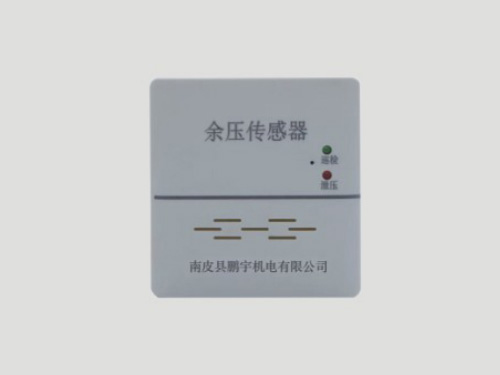Air valve mechanism
Air volume control valve actua
Air valve actuator
Remote controller for smoke ex
Air conditioning accessories
tuyere

Residual pressure sensor
A residual pressure sensor is a sensor used to measure and monitor the pressure difference between two locations. The following is a detailed analysis of the residual pressure sensor:
1. Definition and working principle
Definition: A residual pressure sensor is a device that can measure the pressure difference between two different locations (such as stairwells and corridors, antechambers and corridors, etc.) in real time.
Working principle: The residual pressure sensor works based on the difference between the different pressure values generated by gas or liquid at two locations. When the pressure difference between the two locations changes, the sensing element will generate a corresponding signal, which will be amplified and processed by the signal converter and electronic circuit, and finally output an electrical signal for use. Specifically, the sensing element usually contains two isolated chambers, each of which is connected to a pressure source. When the pressure on both sides is different, it will cause deformation inside the sensing element, resulting in changes in its electrical parameters such as resistance and capacitance, and then generate an electrical signal. The processing unit will receive this signal, calculate the pressure difference value through the internal algorithm, and then convert it into a standard electrical signal output.
2. Components
The residual pressure sensor usually consists of the following parts:
Sensing element: used to measure the pressure value of two locations and convert the pressure difference into an electrical signal.
Signal converter: amplifies and converts the weak signal generated by the sensing element.
Electronic circuit: further processes the signal, such as filtering, linearization, etc., to improve the accuracy and stability of the signal.
Housing: protects the internal components from the influence of the external environment.
III. Application fields
Residual pressure sensors are widely used in many fields, including but not limited to:
Air conditioning system: measures the difference between air inlet and outlet for air flow regulation.
Ventilation system: detects the wind speed difference in the ventilation duct to determine the ventilation effect, and monitors the pressure change of the duct, and automatically adjusts the valve opening to keep the pressure within a safe range.
Liquid level control: measures the difference in liquid level for liquid level control.
Gas water heater: monitors internal pressure changes to ensure safe operation.
Automobile: used to monitor pressure changes in key parts such as engines and braking systems.
Emergency evacuation system: In major disasters such as fire, the residual pressure sensor can detect the pressure difference between the stairwell and the corridor, the front room and the corridor. When the pressure difference reaches the overpressure monitoring value, it sends information to control the electric bypass pressure relief valve on the pressurized blower duct to release the pressure, keep the residual pressure value within the specified range, and ensure the safe evacuation of personnel.
IV. Features and advantages
High precision: It can accurately measure small pressure changes.
High stability: It adopts advanced signal processing technology and anti-interference design to ensure the stability and reliability of the measurement results.
Wide applicability: It is suitable for pressure measurement of various gas and liquid media.
Intelligence: Some residual pressure sensors have functions such as automatic calibration and fault self-diagnosis, which improves the convenience of use and system reliability.
V. Precautions
When using the residual pressure sensor, it is necessary to note that its precision and accuracy are affected by many factors, such as the design and manufacturing quality of the sensing element, temperature, pressure range, etc. Therefore, calibration and debugging are required before use.
The residual pressure sensor should be installed in a suitable position to ensure that the pressure difference at the required position can be accurately measured.
During use, the residual pressure sensor should be regularly inspected and maintained to ensure its normal operation and extend its service life.
In summary, residual pressure sensors play an important role in modern industry and life. Their high precision, high stability and wide applicability make them an indispensable and important equipment in many fields.
Working principle of the actuator of the air volume control valve
Electric air volume control valve, as an intelligent air duct equipment, is widely used in air conditioning systems in fields such as construction, medical care, and industry. It can automatically adjust the opening of the valve according to the air flow
2024-05-06
The execution content of the fire damper actuator
To drive the valve action, a matching actuator is required. The actuator used for fire dampers may not be electrically driven, but may also be electrically driven.
2024-05-06
The structural composition of the fire damper actuator
The fire damper actuator is a type of actuator used for fire dampers in ventilation and air conditioning system pipelines, which solves the problem of inaccurate adjustment of the opening angle of valve blades, thus unable to accurately control the ventil
2024-05-06
What functions can the actuator of the air volume control valve achieve?
The actuator of the air flow regulating valve is an automated equipment used to control the air flow valve in ventilation ducts. It can automatically adjust the opening of the air valve by receiving signals from the control system to achieve the goal of c
2024-05-06
